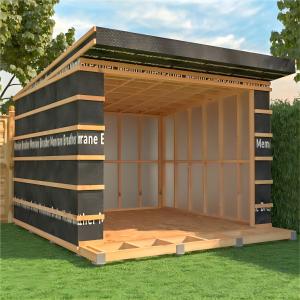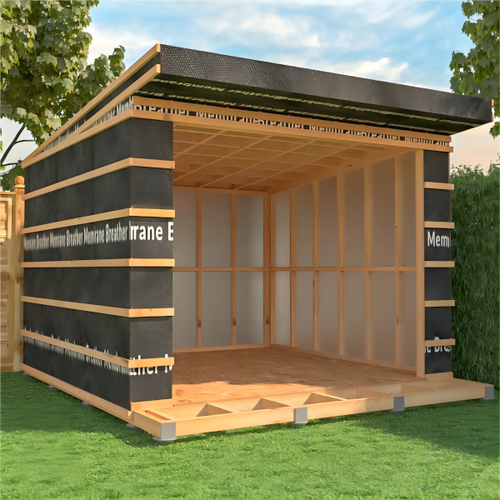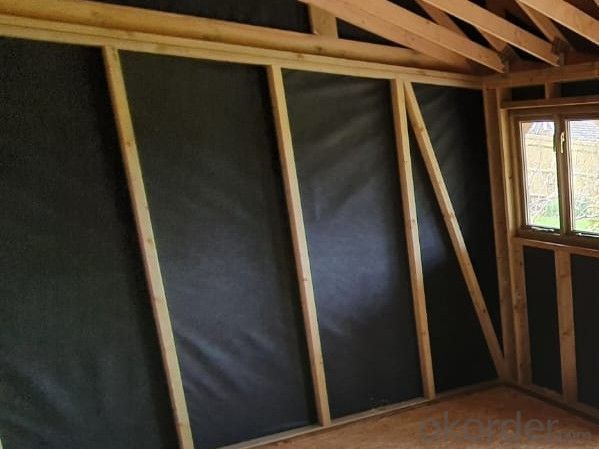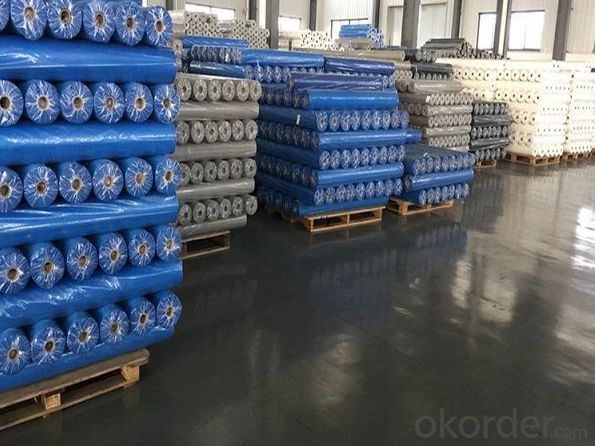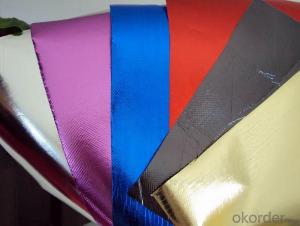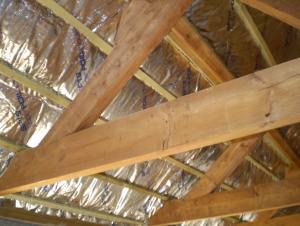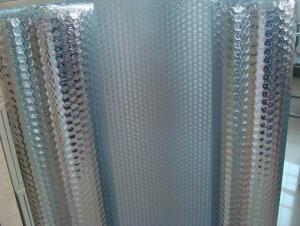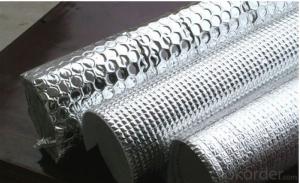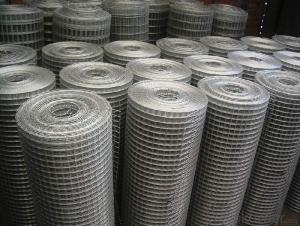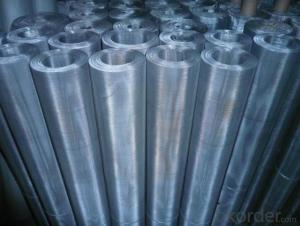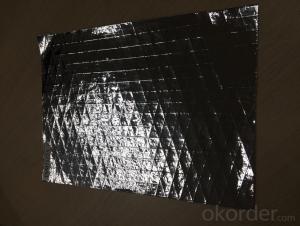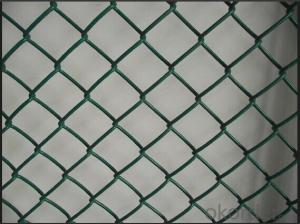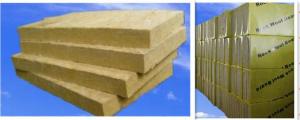Aluminum Foil Facing Breathable Membrane with Breather Membrane
- Loading Port:
- China main port
- Payment Terms:
- TT OR LC
- Min Order Qty:
- 5000 m²
- Supply Capability:
- 1000000 m²/month
OKorder Service Pledge
OKorder Financial Service
You Might Also Like
The breathable membrane is thermally laminated using a high-polymer material in its middle layer. When laid on top of an insulation system, it not only enhances the building's water tightness but also eliminates humidity within the enclosure through its unique breathability. This effectively prolongs the building's lifespan and contributes to thermal insulation, energy conservation, and an improved living environment.
Advantages:
They offer excellent water resistance, protecting against moisture and potential leaks.
They possess a unique vapor permeability.
They are tear-resistant, wear-resistant, and possess good extensibility, ensuring durability and flexibility.
They are lightweight, thin, and antiskid, with good low-temperature flexibility, making them suitable for construction in various conditions.
They are made from 100% recyclable polymer materials, aligning with ecological requirements and promoting sustainability.
Applications:
Roofing: Used under roofing materials like tiles or shingles to enhance waterproofing and ventilation.
Walls: Applied behind cladding to manage moisture and maintain structural integrity.
Timber Frame Construction: Integrated to prevent moisture buildup in timber frame buildings.
Flooring: Used to prevent rising damp in ground or timber floors.
Facade Construction: Enhances insulation and weather protection while allowing breathability in ventilated facades.
Industrial Use: Controls moisture in warehouses, factories, and agricultural buildings.
Improves energy efficiency and moisture control in retrofit projects.
Parameter:
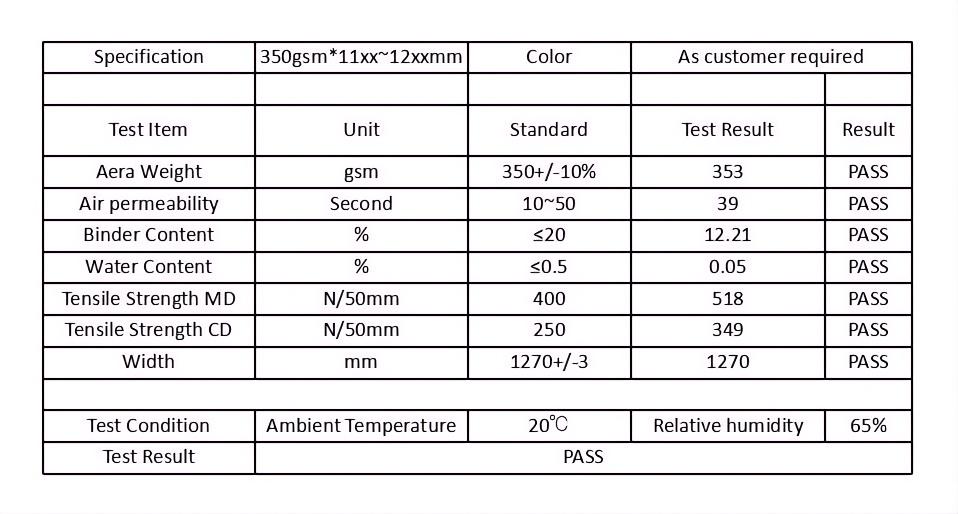
Cost Analysis:
Initial Cost:
Price Range: The cost of breathable membranes varies based on material, thickness, and brand.Factors Affecting Cost: Material quality, thickness, and additional features like UV resistance.
Maintenance Costs:
Long-term Savings: Reduces expenses by preventing issues such as moisture damage and mold growth.
Durability: High-quality membranes require less frequent replacement or repair.
Return on Investment:
Energy Savings: Improved insulation can reduce heating and cooling costs, leading to significant energy savings.
Property Value: Enhanced building performance can increase property value and marketability.
Cost Comparison:
Traditional Moisture Barriers: Lower initial cost but higher long-term maintenance and energy costs.
Breathable Membranes: Higher initial investment but greater overall savings and benefits in the long run.
Market Trends:
Current Use:
Overview: Widely used in residential, commercial, and industrial construction for moisture control and energy efficiency.
Popularity: Increasingly popular in green building projects and sustainable construction practices.
Technological Innovations:
New Materials: Advances in polymer science have led to more durable and efficient breathable membranes.
Smart Sensors: Integration of sensors to monitor moisture levels and structural conditions in real-time.
Self-healing Coatings: Development of membranes with self-repairing capabilities to extend lifespan and reduce maintenance.
Growth Projections:
Market Forecasts: Expected to grow significantly, driven by increasing demand for energy-efficient and sustainable building materials.
Emerging Markets: Growth opportunities in regions with extreme climates, where moisture control and insulation are critical.
Emerging Applications:
Automotive: Use in vehicle manufacturing for moisture control and thermal management.
Sports Facilities: Applications in sports arenas and leisure centers to manage humidity and enhance comfort.
New Construction Methods: Adaptation to modern construction techniques such as modular and prefabricated building systems.
- Q: This question asks for a method to determine the thickness of an aluminum foil sheet.
- <p>To measure the thickness of an aluminum foil sheet, you can use a digital caliper or a micrometer. Place the foil between the jaws of the caliper and take the measurement. If you don't have these tools, you can use the 'multiple fold' method: fold the foil in half repeatedly and measure the total thickness after several folds, then divide by the number of layers to estimate the single layer thickness. For a more precise measurement, especially for thinner foils, consider using a thickness gauge designed for measuring thin materials.</p>
- Q: The user is asking if it's possible to use aluminum foil with a reflective side to cook a pot roast.
- <p>Yes, you can use aluminum foil with a reflective side to make a pot roast. Aluminum foil is a versatile tool in cooking and can be used to wrap the roast, helping to retain moisture and cook the meat evenly. Ensure the foil is heavy-duty to withstand the cooking process and avoid punctures. Remember to monitor the roast closely to prevent overcooking, and adjust cooking times and temperatures as needed.</p>
- Q: What are the methods to avoid aluminum leaching from aluminum foil into food during cooking or storage?
- <p>To prevent aluminum from leaching into food when using aluminum foil facing, avoid direct contact between the foil and acidic or salty foods, as these can cause the aluminum to leach. Do not use aluminum foil at high temperatures, as it can degrade and release aluminum particles. Opt for aluminum-free alternatives like parchment paper or silicone baking mats for lining pans or wrapping foods. When using aluminum foil, ensure it's the heavy-duty type, which is less likely to break down and release aluminum. Always wash hands and utensils that have come into contact with aluminum foil to minimize ingestion of any residual aluminum.</p>
- Q: What are the potential health risks associated with cooking food using aluminum foil?
- <p>Cooking with aluminum foil can potentially lead to the leaching of aluminum into the food, which may have health implications. While the body naturally eliminates small amounts of aluminum, excessive intake can be harmful. Aluminum has been linked to neurological disorders, including Alzheimer's disease, although the connection is not definitively proven. It's also important to note that the amount of aluminum that leaches into food during cooking is generally considered to be low. However, for those concerned about aluminum exposure, it's advisable to minimize the use of aluminum foil in cooking, especially for acidic foods which can increase the rate of aluminum leaching.</p>
- Q: What are the chemical characteristics of the side of aluminum foil that faces outwards?
- <p>The chemical properties of the aluminum foil facing outward are primarily determined by its elemental composition, which is aluminum (Al). Aluminum is a lightweight, soft, and malleable metal with a silvery-white appearance. It is highly reactive and readily forms a thin, protective oxide layer (aluminum oxide) when exposed to air, which prevents further oxidation. This oxide layer is what gives aluminum foil its resistance to corrosion and its shiny appearance. Aluminum is also a good conductor of heat and electricity. The facing side of the aluminum foil may have slight differences in properties due to the manufacturing process, but fundamentally, it remains chemically similar to the rest of the aluminum foil.</p>
- Q: Is it possible to use aluminum foil with a non-stick coating as a substitute for non-stick baking or grilling pans?
- <p>Yes, aluminum foil facing can be used as a non-stick surface for baking pans or grilling pans. It provides a smooth, non-stick surface that prevents food from sticking and makes cleanup easier. However, it's important to ensure that the foil is heavy-duty and not too thin to avoid tearing during use. Additionally, while it can be a temporary solution, it's not as durable as a true non-stick surface and may require frequent replacement.</p>
- Q: Is it possible to use aluminum foil facing as a substitute for a roasting pan?
- <p>While aluminum foil facing can be used in some baking situations, it is not recommended to use it as a direct substitute for a roasting pan. Aluminum foil is not designed to withstand the high temperatures of a roasting process and can melt or warp, leading to uneven cooking and potential safety hazards. A proper roasting pan is made to handle high heat and distribute it evenly, ensuring that your food cooks properly. For best results and safety, use a designated roasting pan or a baking sheet with a higher heat tolerance.</p>
- Q: The user is asking if it's possible to use aluminum foil with a shiny side facing outward to create a sandwich roll.
- <p>Yes, you can use aluminum foil to make a sandwich roll, but it's not recommended to use the shiny side facing outward. The dull side of the foil is typically used for food contact because it's less likely to transfer any potential residues or chemicals to the food. The shiny side may have a coating that isn't safe for direct food contact. Always ensure that the foil is food-safe and use it according to the manufacturer's instructions.</p>
- Q: Can aluminum foil be shaped into a fish basket?
- <p>Yes, you can use aluminum foil facing to make a fish basket. Start by cutting a large piece of aluminum foil and folding it in half. Create a base by folding the edges up to form a shallow bowl shape. Then, fold the sides up and around, gradually narrowing the width to create the sides of the basket. Continue this process until you reach the desired height, ensuring the sides are sturdy enough to hold the fish. Seal the top with a final fold to complete the basket. This makeshift fish basket can be used for cooking or serving fish, but it's not recommended for heavy use or sharp objects due to the fragility of aluminum foil.</p>
- Q: Is it safe to use aluminum foil with a reflective side for food storage?
- <p>Yes, aluminum foil facing can be used for storing food. It is commonly used to wrap, cover, or store food in the refrigerator or freezer to keep it fresh. The aluminum foil creates a barrier that helps to retain moisture and prevent freezer burn. It also protects food from odors and can be used for cooking or reheating in the oven. However, it's important to ensure that the foil does not come into direct contact with acidic or high-sugar foods, as this can lead to a reaction that may cause the aluminum to leach into the food.</p>
Send your message to us
Aluminum Foil Facing Breathable Membrane with Breather Membrane
- Loading Port:
- China main port
- Payment Terms:
- TT OR LC
- Min Order Qty:
- 5000 m²
- Supply Capability:
- 1000000 m²/month
OKorder Service Pledge
OKorder Financial Service
Similar products
Hot products
Hot Searches
Related keywords
